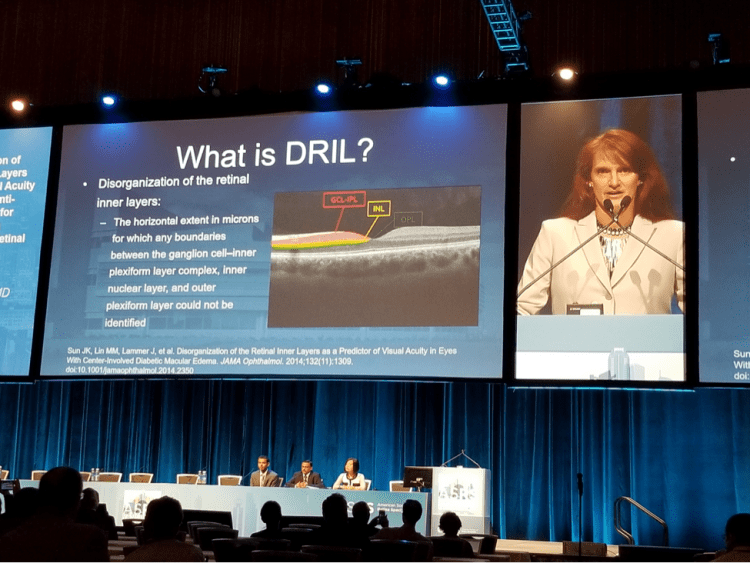Amirfarbod Yazdanyar, MD, PhD
Vitreoretinal Surgery Fellow
UC Davis
The retinal vascular disease session on Monday morning was interactive and informative. The symposium was moderated by Drs. Alay Banker and Linda Lam and variety of topics related to retinal vascular disease were discussed.
Dr. Akshay Thomas from Duke Eye Center institute kicked off the symposium by discussing the association of OCT features such as disorganization of retinal inner layers (DRIL) with clinical outcomes and ultra-widefield fluorescein angiographic (UWFA) findings in patients with central vein occlusion. His study showed that although DRIL is not associated with vision at presentation, the extent of DRIL is predictive of visual outcome in 2 years of follow up. This study also demonstrated that the extent of ischemia on UWFA at presentation is predictive of multitude of DRIL development throughout the course of follow up.

Then, Dr. Amy Babiuch of Cleveland clinic took the podium to discuss the outcome of a retrospective study that that also looked at the association between DRIL and visual acuity at baseline and throughout the 12 months follow up in patients with variety of retinal vein occlusion. She concluded that the presence of DRIL at baseline and the changes of DRIL during follow up period provide strong prognostic values in CRVO/HRVO patients, but not in BRVO group. In this study, FA was not performed to assess the extent of retinal ischemia.

Dr. Stavros Moysidis from Associated Retinal Consultants spoke about the peripheral vascular changes on UWFA in patients with macular telangiectasia type 2. This single center retrospective study showed that patients with MacTel 2 have variety of vascular changes including capillary non-perfusion and pruning, microaneurysms, venous-venous and arterio-venous shunts. However, compared to an age-matched group of controls without retinal vascular disease, there was no statistically significant difference between the two groups, suggesting the changes were due to systemic risk factors or aging.

From USC Roski Eye Institute, Dr. Ameri presented the results of a retrospective study that looked at the visual outcome in patients with anterior segment neovascularization without glaucoma (ASNV) vs. NVG. The mean follow up in this study was 18 months and total of 84 eyes with ASNV and 294 eyes with NVG were enrolled. Dr. Ameri concluded that eyes with ASNV have better BCVA at presentation and throughout the course of the study. Despite treatment with laser or anti-VEGF, 11% of the eyes with ASNV converted to NVG with poor visual outcome. Patients with poor vision at the presentation and/or VH have higher chance of conversion.

The last talk of the symposium was presented by Dr. Alay Banker from India on a somewhat controversial topic. He discussed the efficacy and safety of new intravitreal biosimilar bevacizumab and ranibizumab in retinal vascular disease in a prospective study that enrolled eyes with CNV secondary to AMD, RVO, DME and ROP. The study demonstrated that the intravitreal injection of biosimilar bevacizumab and ranibizumab is effective and safe with a lower cost. However, a few from the audience raised the concerns regarding the safety of the intravitreal use of biosimilars as no long term safety data is available at this point.
